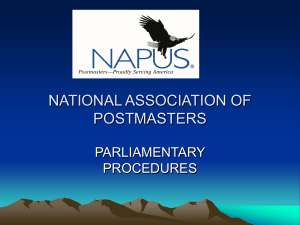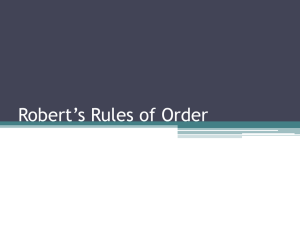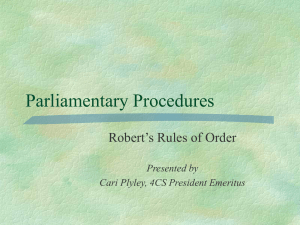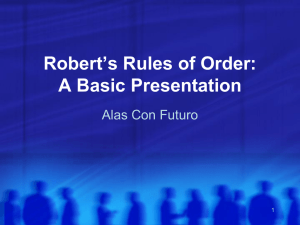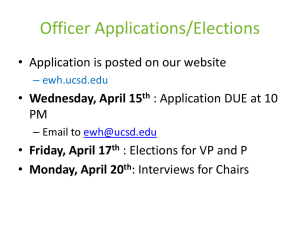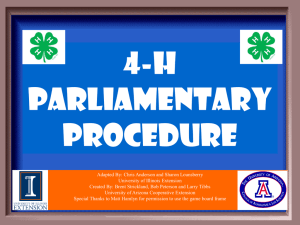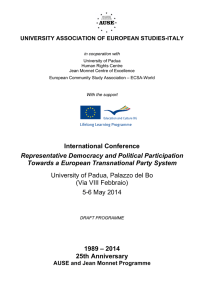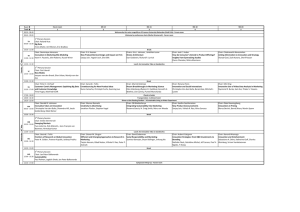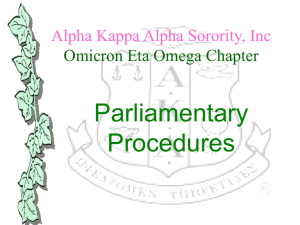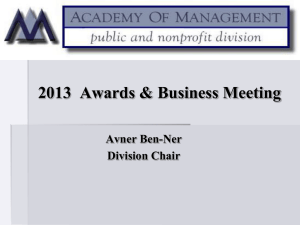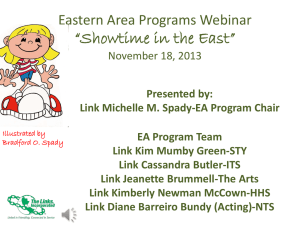SAC Meeting Process And Robert`s Rules
advertisement
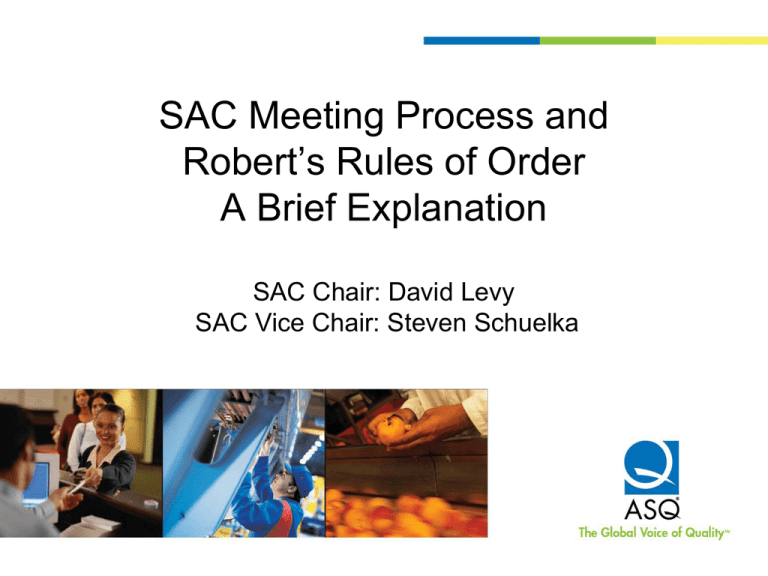
SAC Meeting Process and Robert’s Rules of Order A Brief Explanation SAC Chair: David Levy SAC Vice Chair: Steven Schuelka Purpose • To provide a framework for SAC business meetings • RRoO sets standards which apply to: – – – – – – – – Meeting process Motions Voting Meeting minutes Consent agenda Discussions Information Adjournment Meeting process • Call to order • Roll call – establish a Quorum • Consent Agenda – Minutes • • • • • Action Items / Motions Discussion items Information items New Business Adjournment Motions • A motion is a formal proposal by a member, in a meeting, that the group take a certain action • How to make a motion – I move that…and then clearly describe the proposal • It is recommended that the motion take a positive direction • Language of motion must be precisely stated as it is the language that the group votes to approve / reject – For a motion to be considered by the group it must be ‘Seconded’ by another member of the group – Chair restates the motion Motions • Debate the motion – This means the motion is in discussion – Our practices is to: • Have open discussion about the motion for clarification, then: • Alternate taking for and against the motion until: • Either all discussion has been exhausted or the Previous Question is called, then: – Vote on the motion • Accept (for the motion) • Reject (against the motion • Abstain (a non-vote due to conflict of interest, typically) – Chair reports the results of the vote Typical Motions • Typical types of motions: – Main motion – Amendment to a motion • Must complete before returning to the Main Motion (which may now be an amended motion) • Only one amendment is allowed at a time • Friendly amendment (this is an ASQ practice) – Previous Question • Move to end debate and vote on the current motion – Motion to Postpone • Requires a time or date to postpone to – Motion to Commit • Refer to committee Typical Motions – Lay on the Table • Laying the motion aside temporarily without setting a time for reconsideration – Motion to Reconsider • Can only be made by a member that voted on the winning side of the motion – Postpone indefinitely • This basically ‘kills’ the motion and it may not be brought back for further debate • ASQ Practice – Once a motion is decided, the results belong to the entire group regardless of the way you voted individually Voting • Only Regional Directors and designated Other Group Representatives are considered Voting Members of SAC – One vote per individual on any motion • All SAC votes are majority votes unless otherwise stated in Policy Voting – SAC Chair • Chair presides over meeting • Chair does not participate in debate unless he or she passes the Chair function to the Vice Chair until the Motion is completed • The Chair should only vote when either: – The vote is by ballot, in which case the chair votes along with and at the same time as all other members, or – The chair’s vote will change the result of the vote (a tie breaker for instance) Consent Agenda • In 2014 SAC is adopting the usage of a Consent Agenda • Consent agenda is a motion to approve or reject a number of items that do not require debate. Examples of items on the Consent Agenda are: – – – – Minutes of the previous meeting Policies and Procedures Section name or location changes Section dissolution • The items on the consent agenda are provided in advance for review • Any item may be removed from the consent agenda by a request from any voting member Discussions • Discussion items are items being brought to SAC for consideration that do not require approval by vote during the present meeting • Example: – Changes to ASQ Policies, Programs, Strategies – Introduction to new programs • Brainstorming and questions for clarification are encouraged Information • This is both historical information and communication of events or issues that are coming in the future. • Typically there is minimal discussion however questions for clarification are encouraged Adjournment • SAC operates utilizing an adjournment by the presiding officer (SAC Chair or Vice Chair) without a vote by simple statement: – Meeting is adjourned
